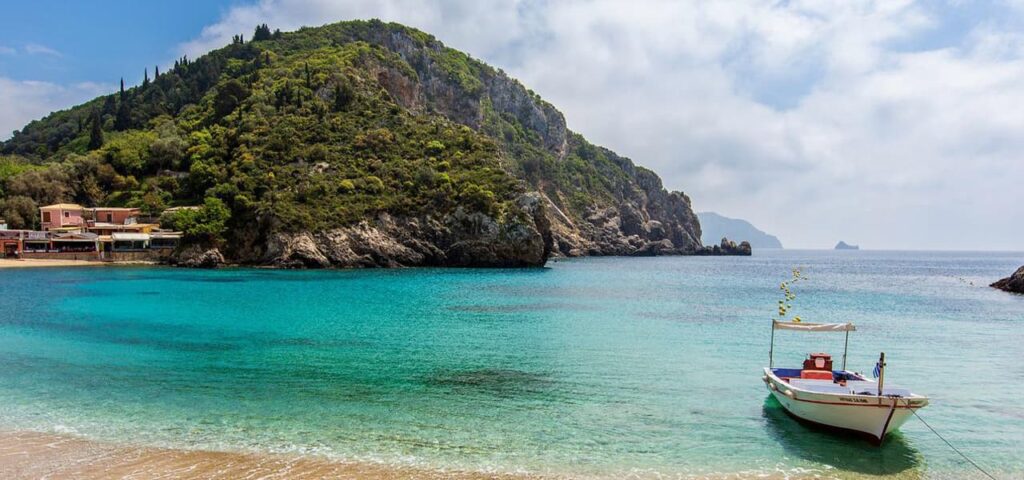The Mon Repo estate, situated in a wooded area on the Kanoni peninsula, the museum and the ancient ruins are one of the most popular tourist attractions of Corfu. It is quite possible to spend several hours here, combining a walk in the fresh air with a visit to the exhibitions themselves.
The centerpiece of the estate is the Villa Mont Repo, which is a small but elegant neoclassical building with a Byzantine domed roof. The villa was built in 1824 on top of a rocky hill on the Canoni Peninsula for the then High Commissioner, Sir Frederick Adam. In 1921, Prince Philip, Duke of Edinburgh, grandson of King George of Greece, was born here.
A year and a half later, however, he left the island with his parents on a British warship as persecution of King Constantine, Philip’s uncle, began in Greece. For several years, ownership of the estate remained in question. Mon Repo was then transferred to the municipality of Corfu, which opened it to the public.
Ancient Treasures. Mon Repo is located in the territory of ancient Corfu (Kerkyra). The wooded area of the estate contains several valuable historical relics. In the southern part of the manor house you can see the ruins of a Doric temple dating back to 500 B.C.
The bright and spacious halls of the villa house the Paliopolis Museum. The rooms on the first floor are furnished with furniture from the early 19th century in the style of the Regency period – at that time Greece was under British rule. Equally interesting are the exhibitions dedicated to ancient Kerkyra, the commercial affairs in the Mediterranean region and the history of Corfu Town. Other halls contain objects found during excavations at Paliopolis.
In this small but well-organized museum is an exhibit on Corfu’s heyday, Dare to meet the ferocious Medusa Gorgon, whose gaze was believed to be similar to that of the basilisk.
The pride of the Archaeological Museum is the majestic and rather intimidating Medusa Gorgon’s pediment, which is one of the best Greek relics. The pediment was discovered in the middle of the ruins of the temple of Artemias on the peninsula of Kanoni near the lagoon Kalikiopoulos (now the airport is located there).
The temple was built in the 6th century BC. The pediment is 17 m long and 3 m wide. The goddess Medusa is depicted on the pediment with a crazy look and a ball of snakes instead of hair protecting her children Chrysoras and Pegasus. Medusa Gorgon befriended Zeus and the slain Titans, and her protectors were mythical lions and panthers. With one look Gorgon turned everything into stone. You’ll feel that burning gaze on you as you tour the halls, and maybe even after you leave the museum.
The frieze of the Gorgon is no less than the Lion of Menecrates, a sculpture created at the end of the 7th century B.C. When you walk past the Lion, you get the impression that the monster is frozen before jumping. Other exhibits in the museum include tombstones, classical ceramics, Bronze Age objects and a collection of coins minted in the 6th and 3rd centuries BC.
The museum also has another pediment from 500 BC depicting two drunken men. One of them is presumably Dionysus, lying on a couch; around him are bowls of wine and various mythical animals. Unfortunately the part of the pediment in which the male figures were represented has been lost. It is therefore not possible to find out exactly to whom it is dedicated.
